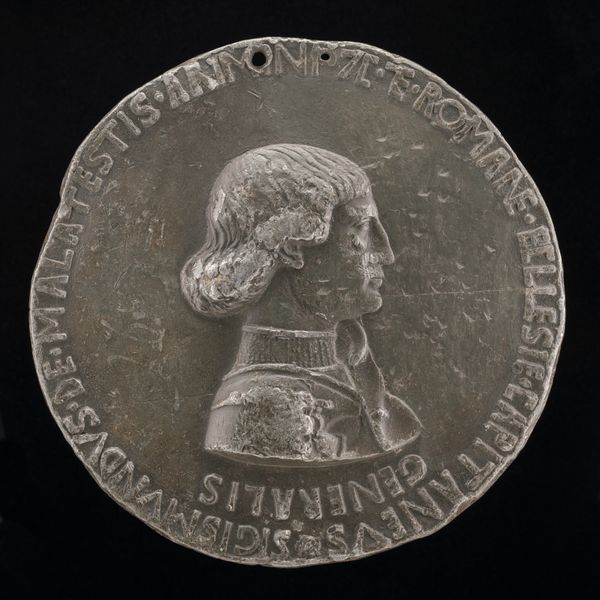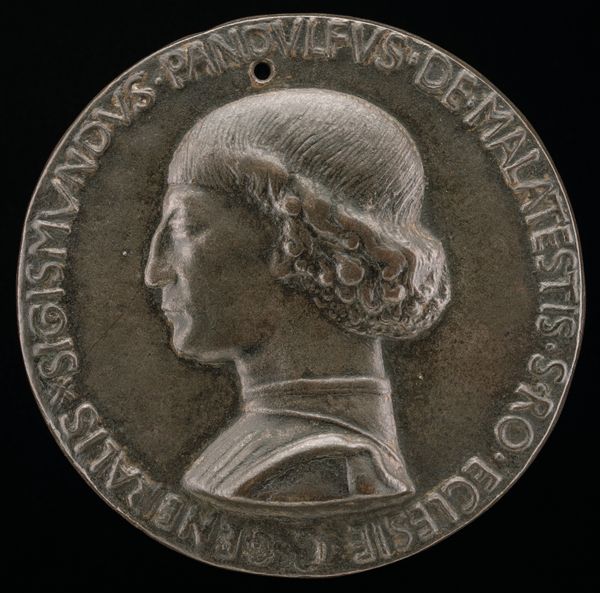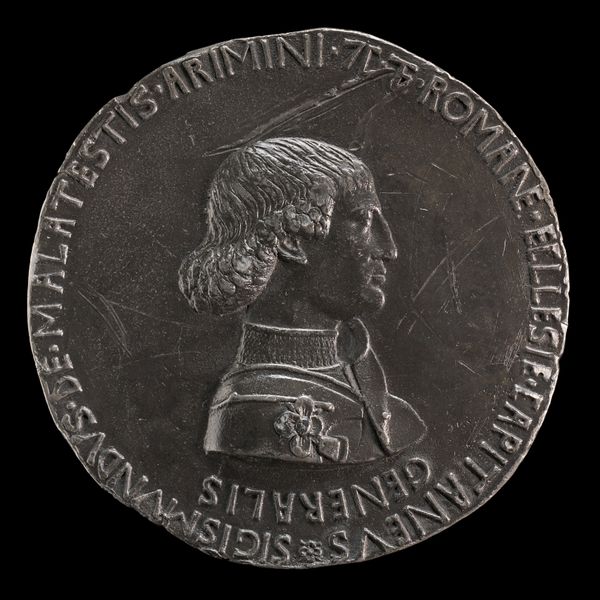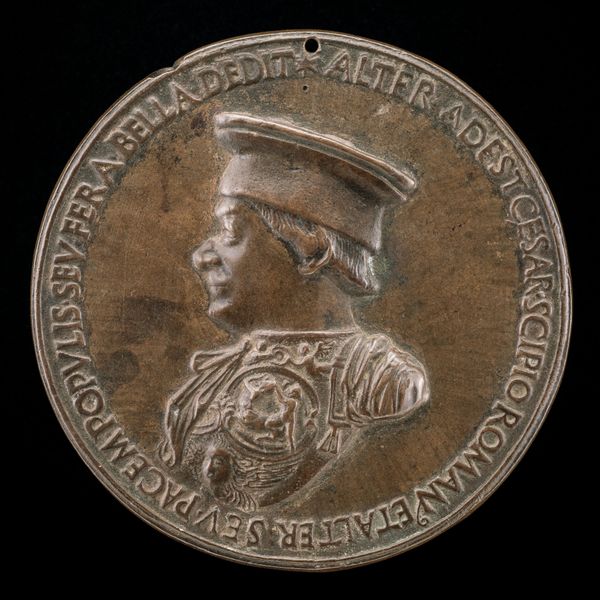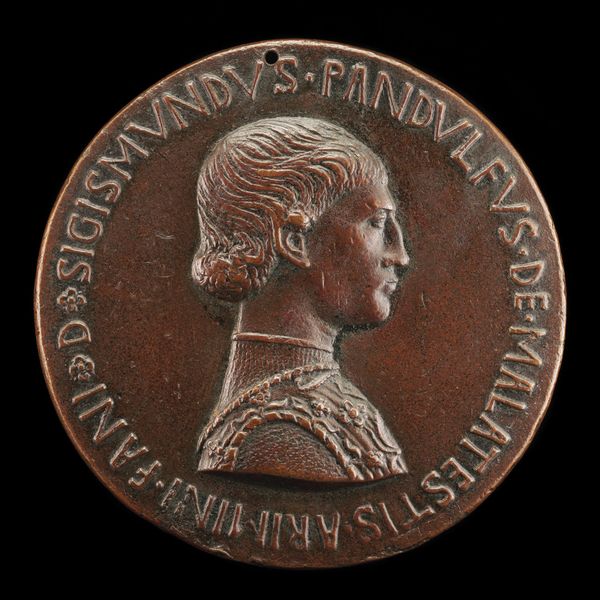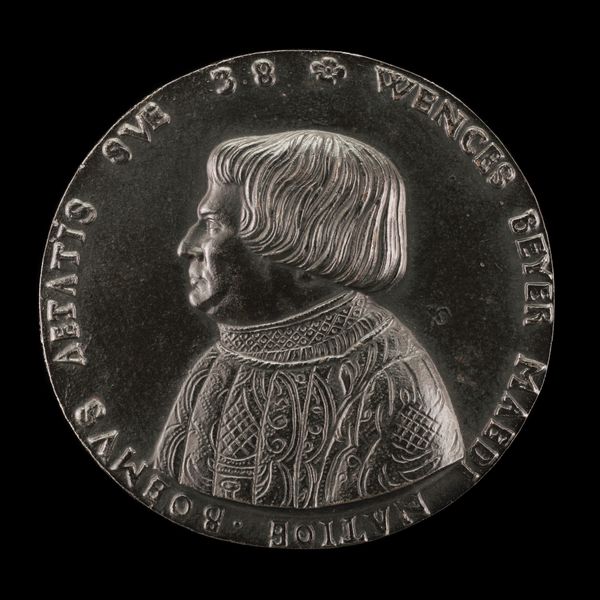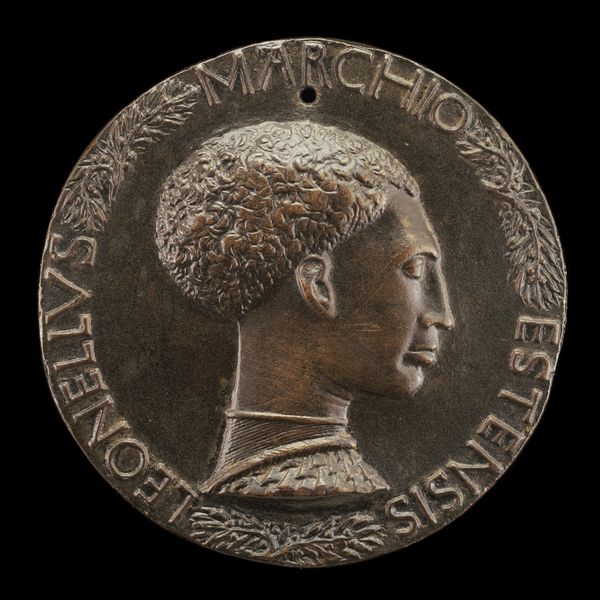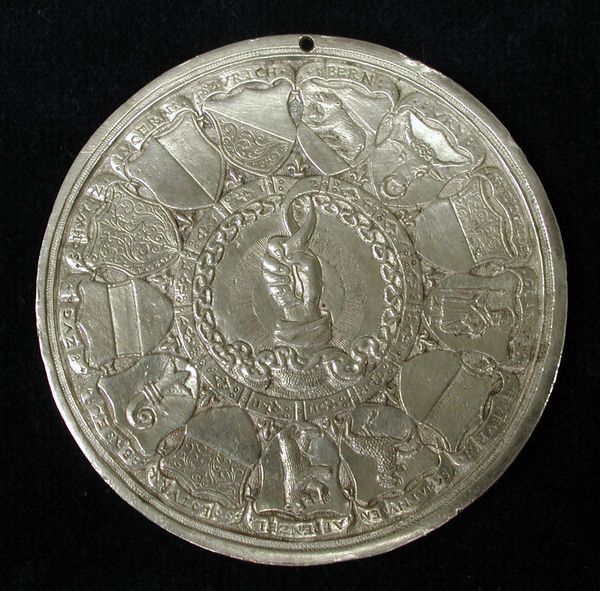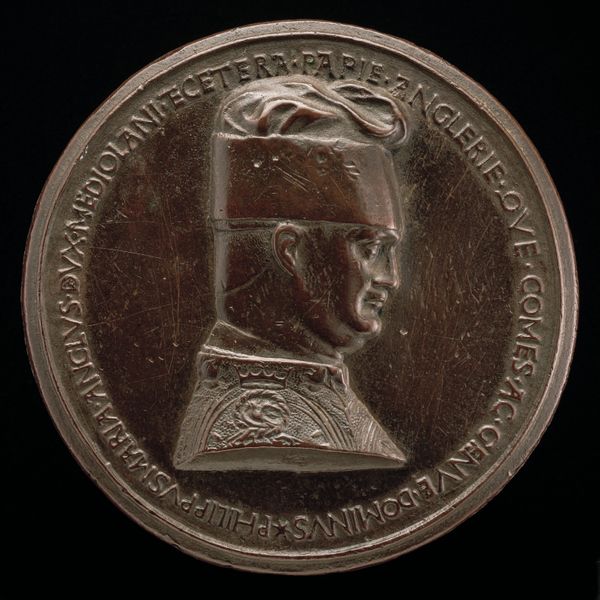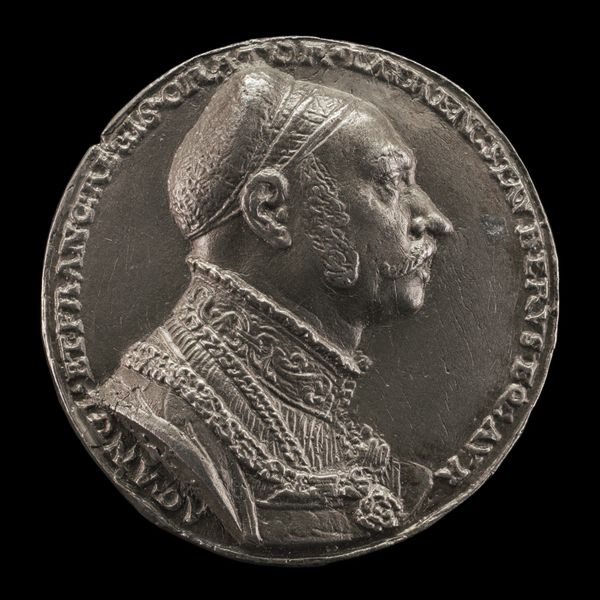![Alfonso V of Aragon, 1394-1458, King of Naples and Sicily 1443 [obverse] by Pisanello](/_next/image?url=https%3A%2F%2Fd2w8kbdekdi1gv.cloudfront.net%2FeyJidWNrZXQiOiAiYXJ0ZXJhLWltYWdlcy1idWNrZXQiLCAia2V5IjogImFydHdvcmtzLzI1ZGI2ZGVkLTI0NTctNDVlOC1iOWM5LWEwYmZhN2JiZjVkYS8yNWRiNmRlZC0yNDU3LTQ1ZTgtYjljOS1hMGJmYTdiYmY1ZGFfZnVsbC5qcGciLCAiZWRpdHMiOiB7InJlc2l6ZSI6IHsid2lkdGgiOiAxOTIwLCAiaGVpZ2h0IjogMTkyMCwgImZpdCI6ICJpbnNpZGUifX19&w=3840&q=75)
Alfonso V of Aragon, 1394-1458, King of Naples and Sicily 1443 [obverse] c. 1449
0:00
0:00
carving, metal, relief, bronze, sculpture
#
portrait
#
medal
#
carving
#
metal
#
stone
#
relief
#
bronze
#
11_renaissance
#
ancient-mediterranean
#
sculpture
#
carved
#
italian-renaissance
Dimensions: overall (diameter): 11.02 cm (4 5/16 in.) gross weight: 325.45 gr (0.717 lb.) axis: 12:00
Copyright: National Gallery of Art: CC0 1.0
Editor: Here we have a bronze medal, dating to around 1449, by Pisanello. It depicts Alfonso V of Aragon. The piece feels quite austere, with its focus on profile and inscription. What is your read of this piece? Curator: Well, considering its purpose and historical moment, "austere" might be accurate, but also strategically crafted. These medals, produced during the Renaissance, weren't simply art objects; they were carefully manufactured propaganda. How do you think this imagery functioned in that cultural landscape? Editor: Hmm, I guess I see it more as individual art. Now that you point that out, could it be about projecting power? It does feature a ruler, so I am just thinking of what that meant to people at the time and how people used art to make a statement. Curator: Precisely. Think about who these medals were created for: fellow rulers, powerful families, important dignitaries. They circulated as diplomatic gifts and symbols of a ruler's status and erudition. The classical style—echoing ancient coins—linked Alfonso to the Roman emperors, reinforcing his authority through historical association. So it's less about the "individual art" and more about participating in image making. Editor: That's interesting. So, the choice of bronze, the Latin inscription, the profile view – all these things contribute to constructing a very specific image of Alfonso V as a powerful, legitimate ruler tapping into a visual language meant to impress a specific audience. Did the audience understand those nuances or take them for granted at the time? Curator: They would definitely read those elements. This wasn’t just about admiring a portrait; it was about understanding a claim to power embedded in the artwork itself, actively engaging in a dialogue of status and influence. They used these kinds of imagery to communicate between one another through art, if that makes sense. Editor: It does! I am seeing the relief now as one tiny brick from an entire castle, an active object shaping history, thanks! Curator: Indeed. It also offers us today a fascinating lens through which to study how rulers historically presented themselves. We've both seen a Renaissance object function not just as artwork, but political device.
Comments
No comments
Be the first to comment and join the conversation on the ultimate creative platform.
